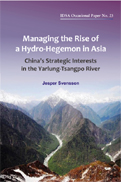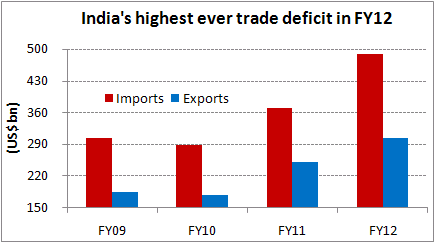| President’s Buddha Purnima Greetings |
| The President of India, Smt. Pratibha Devisingh Patil, in her message on the occasion of Buddha Purnima which is being observed tomorrow, has said: - “On the auspicious occasion of Buddha Purnima, I send my greetings and good wishes to my fellow citizens. Lord Buddha’s teachings have had influence on Indian culture and thoughts. The message preached by the Tathagatha, of compassion, non-violence and equality should serve as a beacon for humanity in its path towards spiritual emancipation”. |
V Ramesh, Deputy Chief Executive, AMFI, presents us with a very practical
scenario. “Let’s take a town called Dindigul in South India. Now assume that no
AMC has an office there and neither an R&T presence. If that be the case,
one has to send the transactions by post or courier to the nearest town.”
The solution? AMFI’s new online platform, MF Utility. “This being on the internet, the investor will be able to simply log in and transact,” says Ramesh. Though an investor with internet connectivity does have online options available today, MF Utility promises a lot more.
It has a simple and focussed function – to be an order-routing application platform. There will be no processing done here. The orders will come in through various channels and this will be a collection zone where all the transactions will be collated and channelized to the R&T agents.
So all players – AMCs, distributors and investors can input their orders here. This system will aggregate all orders – online and offline, before it electronically transfers it to the R&T agent, as an aggregated transaction file, for processing. This is possible simply because all fund houses and distributors will be connected to the platform. It definitely is much more efficient and scalable than the current process.
Will this affect the current players in terms of business? Not at all.
The existing infrastructure is not substituted as the workflow continues to be the same for those in the trade. The R&T agents will continue to process purchases, redemptions, switches, dividend payments and all other such transactions.
Distributors will still play a very important role in advisory, something that this platform will not provide. Being an industry body, the platform will be neutral and not favour any single AMC. While fund related information in terms of offer documents and fact sheets will be provided, there will be no advisory in terms of performance rating, fund analysis, recommendations or comparisons.

The distributor will be able to extend his window to accept transactions. Today, since he has to submit the clients’ transaction by 3pm at a particular location, the internal cut off time is much earlier, depending on how far he is from the nearest transaction point. With MFU, since he can directly enter the transaction, he can probably accept the transactions in his office till much later.
The distributor will also be able to see snapshots of his clients’ portfolios and asset allocation for the transactions that have come through him. There will also be various MIS available to him, which will help him view his business, and accordingly strategise.
Going forward, no distributor needs to create a full online module to have a web presence. He can simply have the front page and link his website to MFU for transactions.
Eventually, by offering a convenient and efficient consolidated platform, MF Utility will play an important role in bringing in more investors. Unfortunately, online trading platforms have not met with overwhelming success. While volumes have shown some amount of pick-up for online brokerage-driven platforms, not much has been transacted through the direct online route of AMCs. Maybe this could change the dynamics.
Benefits to investors
Reach
Once they obtain a log-in ID and password, investors and distributors from all over the country can invest via this platform.
Efficient
Since account opening is centralised, the investor can transact on all the mutual funds with one account number. In case of any change in bank details etc, the investor needs to make the change at just one place.
Ease of transaction
Investors can invest in multiple funds with a single payment. Let’s say an investor wants to invest Rs 50,000 in five funds. While in the current scenario he/she will have to cut five cheques, under MFU, a consolidated cheque of Rs 50,000 can be paid.
Convenient
At one single window, the investor will have access to all fund houses and all their schemes. For all the funds, the investor needs to remember only one log-in ID and password; unlike at present where he will probably have multiple ones for different funds and their websites.
Portfolio review
Having one account for all transactions, a unified view of each investor’s fund portfolio is provided.
The solution? AMFI’s new online platform, MF Utility. “This being on the internet, the investor will be able to simply log in and transact,” says Ramesh. Though an investor with internet connectivity does have online options available today, MF Utility promises a lot more.
It has a simple and focussed function – to be an order-routing application platform. There will be no processing done here. The orders will come in through various channels and this will be a collection zone where all the transactions will be collated and channelized to the R&T agents.
So all players – AMCs, distributors and investors can input their orders here. This system will aggregate all orders – online and offline, before it electronically transfers it to the R&T agent, as an aggregated transaction file, for processing. This is possible simply because all fund houses and distributors will be connected to the platform. It definitely is much more efficient and scalable than the current process.
Will this affect the current players in terms of business? Not at all.
The existing infrastructure is not substituted as the workflow continues to be the same for those in the trade. The R&T agents will continue to process purchases, redemptions, switches, dividend payments and all other such transactions.
Distributors will still play a very important role in advisory, something that this platform will not provide. Being an industry body, the platform will be neutral and not favour any single AMC. While fund related information in terms of offer documents and fact sheets will be provided, there will be no advisory in terms of performance rating, fund analysis, recommendations or comparisons.

The distributor will be able to extend his window to accept transactions. Today, since he has to submit the clients’ transaction by 3pm at a particular location, the internal cut off time is much earlier, depending on how far he is from the nearest transaction point. With MFU, since he can directly enter the transaction, he can probably accept the transactions in his office till much later.
The distributor will also be able to see snapshots of his clients’ portfolios and asset allocation for the transactions that have come through him. There will also be various MIS available to him, which will help him view his business, and accordingly strategise.
Going forward, no distributor needs to create a full online module to have a web presence. He can simply have the front page and link his website to MFU for transactions.
Eventually, by offering a convenient and efficient consolidated platform, MF Utility will play an important role in bringing in more investors. Unfortunately, online trading platforms have not met with overwhelming success. While volumes have shown some amount of pick-up for online brokerage-driven platforms, not much has been transacted through the direct online route of AMCs. Maybe this could change the dynamics.
Benefits to investors
Reach
Once they obtain a log-in ID and password, investors and distributors from all over the country can invest via this platform.
Efficient
Since account opening is centralised, the investor can transact on all the mutual funds with one account number. In case of any change in bank details etc, the investor needs to make the change at just one place.
Ease of transaction
Investors can invest in multiple funds with a single payment. Let’s say an investor wants to invest Rs 50,000 in five funds. While in the current scenario he/she will have to cut five cheques, under MFU, a consolidated cheque of Rs 50,000 can be paid.
Convenient
At one single window, the investor will have access to all fund houses and all their schemes. For all the funds, the investor needs to remember only one log-in ID and password; unlike at present where he will probably have multiple ones for different funds and their websites.
Portfolio review
Having one account for all transactions, a unified view of each investor’s fund portfolio is provided.













